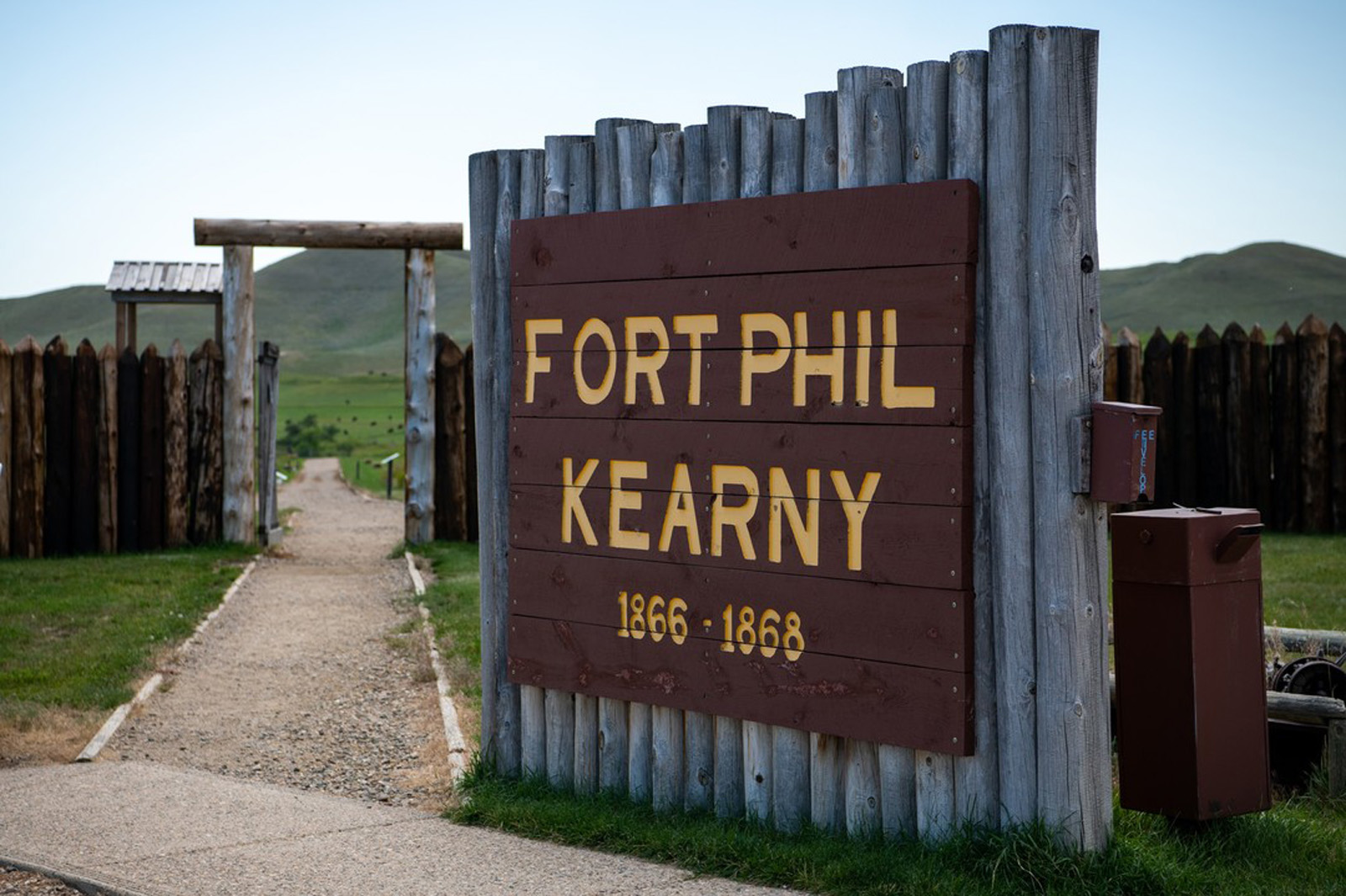
The largest of the three forts built along the Bozeman Trail leading to the gold fields in Montana, Fort Phil Kearny was established by the U.S. Army on July 15, 1866, on the Piney Creek in what is now northern Johnson County. It was established to protect freighters, gold prospectors and other travelers along the “Bloody Bozeman” from attack by Plains Indians wary of further encroachment by pioneers and the military. The fort was located between the other two established along the trail – Fort Reno, northeast of present-day Kaycee, and Fort C.F. Smith in Montana. An 8‐foot‐tall wooden stockade fortified Fort Phil Kearny’s 17 acres, making it the largest stockade fort in the West.
Two major battles, the Fetterman fight and the Wagon Box fight, occurred near the fort along with numerous smaller skirmishes. After the U.S. government enacted the Fort Laramie Treaty of 1868, the forts along the Bozeman Trail were abandoned. Shortly after the troops left Fort Phil Kearny in the summer of 1868, it was burned down, probably by Cheyenne forces. Fort Phil Kearny was named to the National Register of Historic Places in 1960. Now, trails lead visitors to the sites of the conflicts, and interpretive signs explain the events from the perspectives of both the military and Native American groups.
The Fort Phil Kearny staff in the Interpretive Center and Gift Shop will introduce visitors to the context of the Indian Wars and Bozeman Trail. The center includes a diorama of the fort that depicts, to scale, the complete fort as it would have looked in the fall of 1866, and it offers a 12-minute video. Visitors can then enter the original site, through reconstructed stockade walls and experience the expansive grounds through a self-guided tour. Corner posts and signs inform visitors where original buildings stood, and stockade sections demonstrate exactly how the wall was built to protect soldiers, civilians (including families), and supplies from Native American warriors and large populations of hungry timberwolves.
Throughout the fort grounds, interpretation invites visitors to understand fort life, the colorful characters that resided therein, and appreciate the contrast of a busy fort operation in such an isolated location. Pets are welcome on site grounds. Please keep all pets on a leash at all times and pick up after them. No pets are allowed inside the Interpretive Center building.
The state also manages the Fetterman and Wagon Box battle sites, which are both free areas, open sunrise to sunset seasonally. The Fetterman site marks the location of a December 1866 battle that took place when Captain William Fetterman allowed himself and his troops to be lured over a hill north of the fort and outside of timely supportive distance from Fort Phil Kearny. He and all 80 men in his command were killed by Cheyenne, Arapaho and Sioux warriors. For the tribes, it was known as The Battle of Hundred in the Hand. Fetterman site maps are available at the Fort Phil Kearny Interpretive Center.
The Wagon Box Fight, which took place in August 1867 a few miles west of Fort Phil Kearny, developed when 32 woodcutters and guards were attacked by the forces of Oglala Chief Red Cloud. The men defended themselves with new breech-loading rifles, firing from a corral of wagon boxes and staving off the Indians until help arrived from the fort.
To schedule a guided tour (for groups of 10 or more) call the site to speak with the superintendent at 307-684-7629 or email at sharie.shada@wyo.gov The Fort Phil Kearny/Bozeman Trail Association Gift Shop offers the best selection on site-related literature. Staff people are prepared to recommend titles and provide guidance for historians, amateur historians, and the casually interested.
528 Wagon Box Road
Banner WY, 82832